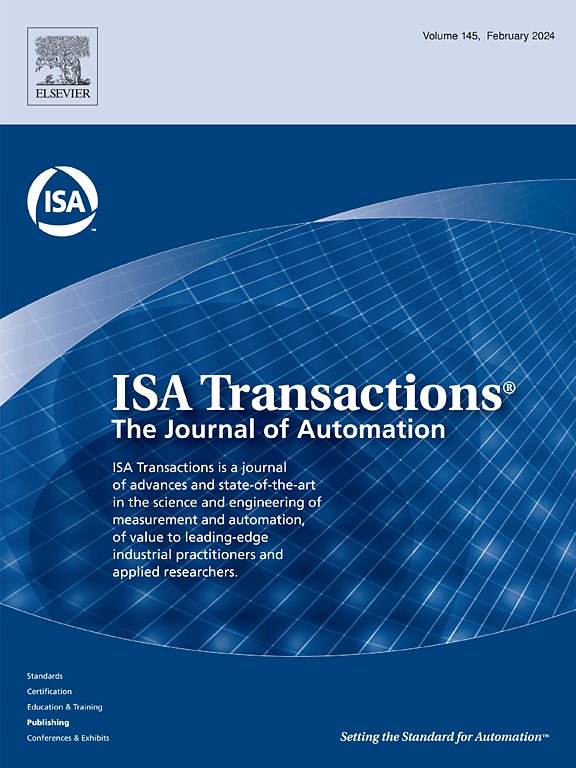多源子域负转移抑制和多伪标签引导对齐:交叉工作条件下的故障诊断方法。
IF 6.3
2区 计算机科学
Q1 AUTOMATION & CONTROL SYSTEMS
引用次数: 0
摘要
人们对基于迁移学习的故障诊断进行了广泛的研究。然而,由于多个源域 (MSD) 的子域分布存在显著差异,可能会出现负信息传递。大多数现有方法只关注单个源域(SSD)的子域对目标域(TD)的影响。因此,本文提出了一种新颖的多阶段对齐多源子域适应(MAMSA)方法。全局特征提取器旨在提取域不变特征。三个特定域特征提取器采用定制的适配策略捕捉不同域的高级故障特征,该策略结合了对抗学习和基于多个伪标签引导的局部最大均值差异(MP-LMMD)的分布对齐,以学习子域不变特征。MP-LMMD 利用 TD 中所有分类器生成的伪标签来指导子域的对齐,抑制源域(SD)的负迁移。实验结果表明,MAMSA 方法具有出色的抑制负迁移能力,在交叉工作条件下使用 MAMSA 可以大大提高诊断性能。本文章由计算机程序翻译,如有差异,请以英文原文为准。
Multi-source subdomain negative transfer suppression and multiple pseudo-labels guidance alignment: A method for fault diagnosis under cross-working conditions
Extensive researches have been conducted on transfer learning based fault diagnosis. However, negative information transfer may arise due to significant differences in the subdomain distribution across multiple source domains (MSDs). Most existing methods focus solely on the impact of subdomains from a single source domain (SSD) on the target domain (TD). Therefore, this paper proposed a novel multi-stage alignment multi-source subdomain adaptation (MAMSA) method. The global feature extractor is designed to extract domain-invariant features. Three domain-specific feature extractors capture high-level fault features from different domains with a customized adaptation strategy, which combines adversarial learning and distribution alignment based on multiple pseudo-label-guided local maximum mean discrepancy (MP-LMMD) to learn subdomain-invariant features. MP-LMMD utilizes pseudo-labels generated from all classifiers in the TD to guide the alignment of subdomains, suppressing negative transfer from the source domains (SDs). The experimental results indicate that the MAMSA method has excellent capabilities to suppress negative transfer, and the diagnostic performance can be greatly promoted with MAMSA under cross-working conditions.
求助全文
通过发布文献求助,成功后即可免费获取论文全文。
去求助
来源期刊

ISA transactions
工程技术-工程:综合
CiteScore
11.70
自引率
12.30%
发文量
824
审稿时长
4.4 months
期刊介绍:
ISA Transactions serves as a platform for showcasing advancements in measurement and automation, catering to both industrial practitioners and applied researchers. It covers a wide array of topics within measurement, including sensors, signal processing, data analysis, and fault detection, supported by techniques such as artificial intelligence and communication systems. Automation topics encompass control strategies, modelling, system reliability, and maintenance, alongside optimization and human-machine interaction. The journal targets research and development professionals in control systems, process instrumentation, and automation from academia and industry.
 求助内容:
求助内容: 应助结果提醒方式:
应助结果提醒方式:


